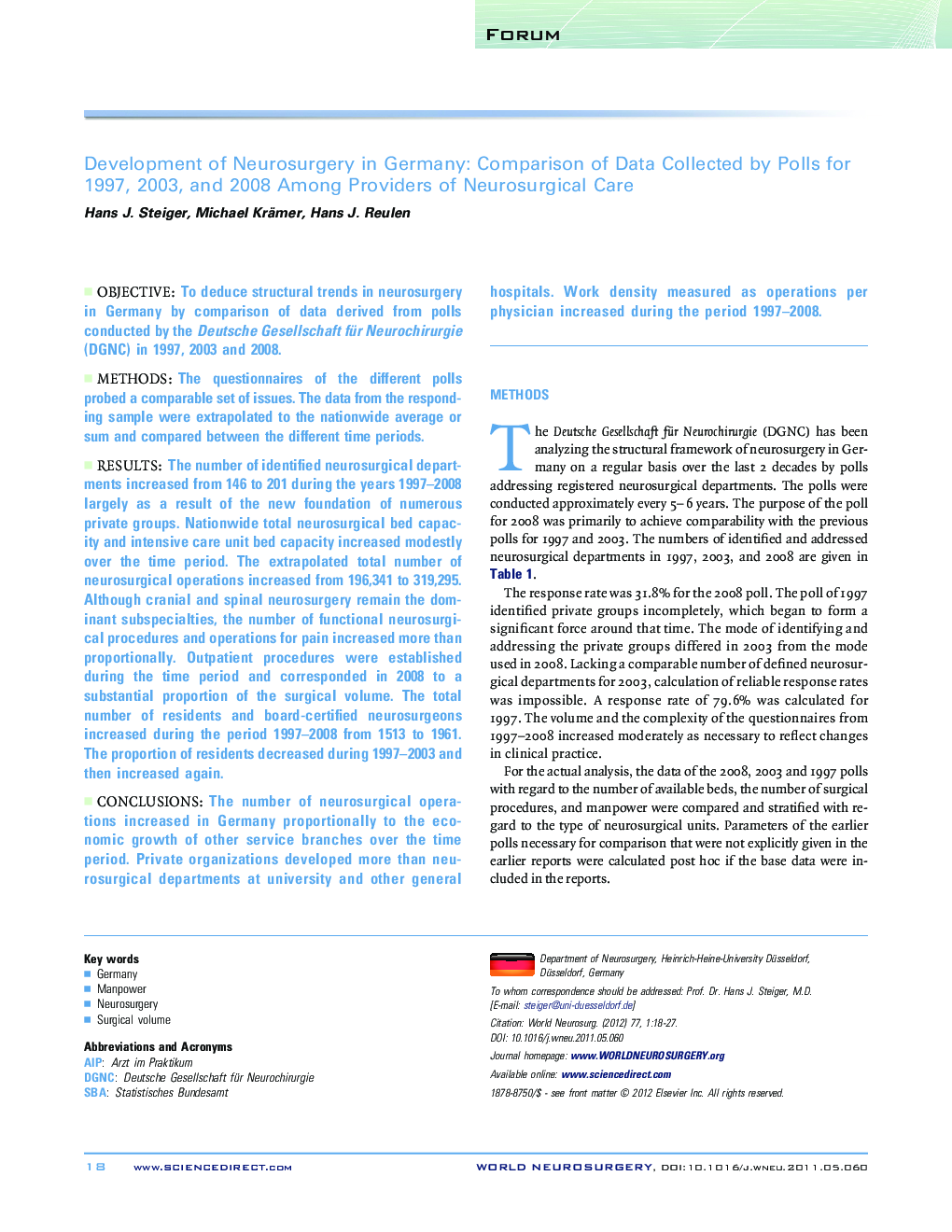| Article ID | Journal | Published Year | Pages | File Type |
|---|---|---|---|---|
| 3096608 | World Neurosurgery | 2012 | 10 Pages |
ObjectiveTo deduce structural trends in neurosurgery in Germany by comparison of data derived from polls conducted by the Deutsche Gesellschaft für Neurochirurgie (DGNC) in 1997, 2003 and 2008.MethodsThe questionnaires of the different polls probed a comparable set of issues. The data from the responding sample were extrapolated to the nationwide average or sum and compared between the different time periods.ResultsThe number of identified neurosurgical departments increased from 146 to 201 during the years 1997–2008 largely as a result of the new foundation of numerous private groups. Nationwide total neurosurgical bed capacity and intensive care unit bed capacity increased modestly over the time period. The extrapolated total number of neurosurgical operations increased from 196,341 to 319,295. Although cranial and spinal neurosurgery remain the dominant subspecialties, the number of functional neurosurgical procedures and operations for pain increased more than proportionally. Outpatient procedures were established during the time period and corresponded in 2008 to a substantial proportion of the surgical volume. The total number of residents and board-certified neurosurgeons increased during the period 1997–2008 from 1513 to 1961. The proportion of residents decreased during 1997–2003 and then increased again.ConclusionsThe number of neurosurgical operations increased in Germany proportionally to the economic growth of other service branches over the time period. Private organizations developed more than neurosurgical departments at university and other general hospitals. Work density measured as operations per physician increased during the period 1997–2008.
